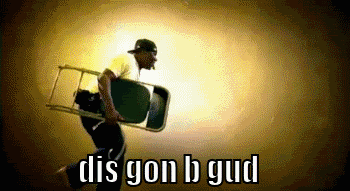Japanese Forces assigned Operation AI
0400 Hours December 7, 1941
Kido Butai (First Air Fleet) (Striking Force)
(260 miles north of Oahu)
Carriers Akagi, Kaga, Soryu, Hiryu, Shokaku, Zuikaku, battleships Hiei, Haruna, Kongo, Kirishima, CA Tone (fleet flag Yamamoto), Chikuma, CL Abukuma, 14 destroyers, 12 fleet oilers, 414 combat aircraft (54 Zero fighters for fleet defense, 354 for striking force including 81 fighters, 143 B5N Kate torpedo/level bombers, 135 D3A Val dive bombers) plus 20 float planes for scouting
the fleet turns to the west to launch, then returns to its base course heading south so that by 0930 it will be 180 miles north of Oahu
as of 0400 hours
CL Abukuma, 3 destroyers are 30 miles in front of the fleet as an advanced screen
1 Destroyer (Arare) is moving south at 32 knots toward it's assigned mission position (which it will reach 130 miles north of Oahu at 0500 hours)
the I74 is in position 30 miles off the north coast of Oahu, off Kamuka Point
the I3 is in position 10 miles off shore in Walmea Bay
First Wave: spotted on deck (commander Lieutenant Commander Murata)
40 Kate torpedo bombers (12 each Akagi, Kaga, 8 each Soryu, Hiryu), 3 Val dive bombers (Kaga)
Second Wave: spotted on deck
(Strike Commander: Commander Fuchida)
9 Zero fighters (Kaneohe Bay attack)(Shokaku)
21 Kate Level bombers (air base suppression)(Shokaku)
9 Zero fighters (Air Cover)(Zuikaku)
21 Kate Level bombers (air base suppression)(Zuikaku)
12 Zero fighters (air cover)(Soryu)
12 Zero fighters (air cover)(Hiryu)
9 Zero fighters (air cover)(Akagi)
9 Zero fighters (air cover)(Kaga)
Second Wave: hanger deck (begin moving to flight deck after First Wave launched, which takes 30 minutes total)
15 Kate Level bombers (Akagi)(fleet attack)
15 Kate Level bombers (Kaga)(fleet attack)
10 Kate Level bombers (Soryu)(fleet attack)
10 Kate Level bombers (Hiryu)(fleet attack)
6 Val Dive bombers (Akagi)(special attack unit)
6 Kate reconnaissance scouts (Zuikaku)
6 Kate reconnaissance scouts (Shokaku)
Third Wave (hanger decks, spotted and launched 1 hour after Second Wave)
(commander: Lieutenant Commander Egusa)
Group 1 (Egusa)
18 Val Dive bombers (Soryu)(fleet attack)
18 Val Dive bombers (Hiryu)(fleet attack)
9 Zero fighters (Hiryu)
9 Zero fighters (Soryu)
Group 2 (Shimazaki)
9 Zero fighters (Akagi)
27 Val Dive bombers (Shokaku)(air base suppression)
18 Val Dive bombers (Akagi)(fleet attack)
Group 3 (Sakamoto)
9 Zero fighters (Kaga)
27 Val Dive bombers (Zuikaku)(air base suppression)
18 Val Dive bombers (Kaga)(fleet attack)
Fleet Combat Air patrol
6 Zeros each carrier (36 total), spotted and launched after Third Wave departs
(refueling forces, the 12 fleet oilers, along with 4 destroyers are organized into 4 refueling groups. One is already en route for home, having completed its mission on December 4 (3 oilers, unescorted, meeting with 2 additional destroyers en route). Another group completed its task on December 6, and is en route for home with 2 destroyers as escorts. The third group if midway between Marcus Island and Wake Island with 2 destroyers, while a fourth group, with 2 destroyers and 3 oilers, is attached to the Midway Assault Force below)
6th Fleet (submarines)
31 fleet submarines plus 5 special attack (midget) submarines
Midway Island Assault Force
CA Aoba, Furutaka, Kako, Kinugasa, 4 destroyers, 2 gunboats, 6 submarine chasers, 1 seaplane tender, 2 tenders, 9 transports, South Sea Force (4,886 troops)
Wake Island Assault force
this force is en route to Wake Island as of December 7
CL Yubari, Tatsuta, Tenryu, 6 destroyers, 2 destroyer transports, 2 transports, (450 naval Special Landing Force Troops)
